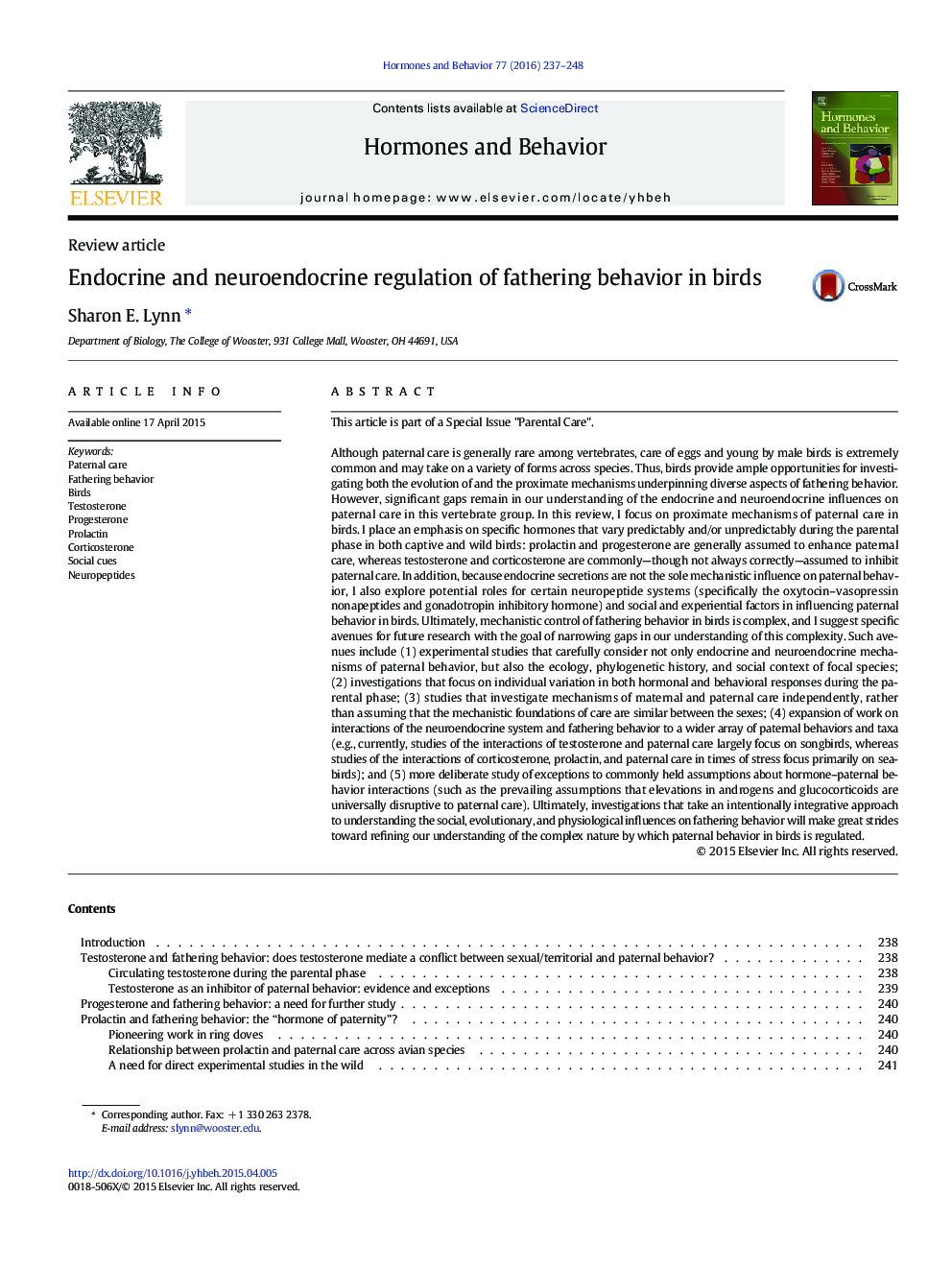| کد مقاله | کد نشریه | سال انتشار | مقاله انگلیسی | نسخه تمام متن |
|---|---|---|---|---|
| 323072 | 540480 | 2016 | 12 صفحه PDF | دانلود رایگان |
• Paternal care is more common in birds than in other vertebrate groups.
• Testosterone, progesterone, prolactin, and corticosterone influence paternal care.
• Emerging neuropeptide systems may also be important.
• Social and experiential factors may shape interactions of hormones and male care.
• Further studies integrating a variety of experimental approaches are necessary.
This article is part of a Special Issue "Parental Care".Although paternal care is generally rare among vertebrates, care of eggs and young by male birds is extremely common and may take on a variety of forms across species. Thus, birds provide ample opportunities for investigating both the evolution of and the proximate mechanisms underpinning diverse aspects of fathering behavior. However, significant gaps remain in our understanding of the endocrine and neuroendocrine influences on paternal care in this vertebrate group. In this review, I focus on proximate mechanisms of paternal care in birds. I place an emphasis on specific hormones that vary predictably and/or unpredictably during the parental phase in both captive and wild birds: prolactin and progesterone are generally assumed to enhance paternal care, whereas testosterone and corticosterone are commonly—though not always correctly—assumed to inhibit paternal care. In addition, because endocrine secretions are not the sole mechanistic influence on paternal behavior, I also explore potential roles for certain neuropeptide systems (specifically the oxytocin–vasopressin nonapeptides and gonadotropin inhibitory hormone) and social and experiential factors in influencing paternal behavior in birds. Ultimately, mechanistic control of fathering behavior in birds is complex, and I suggest specific avenues for future research with the goal of narrowing gaps in our understanding of this complexity. Such avenues include (1) experimental studies that carefully consider not only endocrine and neuroendocrine mechanisms of paternal behavior, but also the ecology, phylogenetic history, and social context of focal species; (2) investigations that focus on individual variation in both hormonal and behavioral responses during the parental phase; (3) studies that investigate mechanisms of maternal and paternal care independently, rather than assuming that the mechanistic foundations of care are similar between the sexes; (4) expansion of work on interactions of the neuroendocrine system and fathering behavior to a wider array of paternal behaviors and taxa (e.g., currently, studies of the interactions of testosterone and paternal care largely focus on songbirds, whereas studies of the interactions of corticosterone, prolactin, and paternal care in times of stress focus primarily on seabirds); and (5) more deliberate study of exceptions to commonly held assumptions about hormone–paternal behavior interactions (such as the prevailing assumptions that elevations in androgens and glucocorticoids are universally disruptive to paternal care). Ultimately, investigations that take an intentionally integrative approach to understanding the social, evolutionary, and physiological influences on fathering behavior will make great strides toward refining our understanding of the complex nature by which paternal behavior in birds is regulated.
Journal: Hormones and Behavior - Volume 77, January 2016, Pages 237–248
